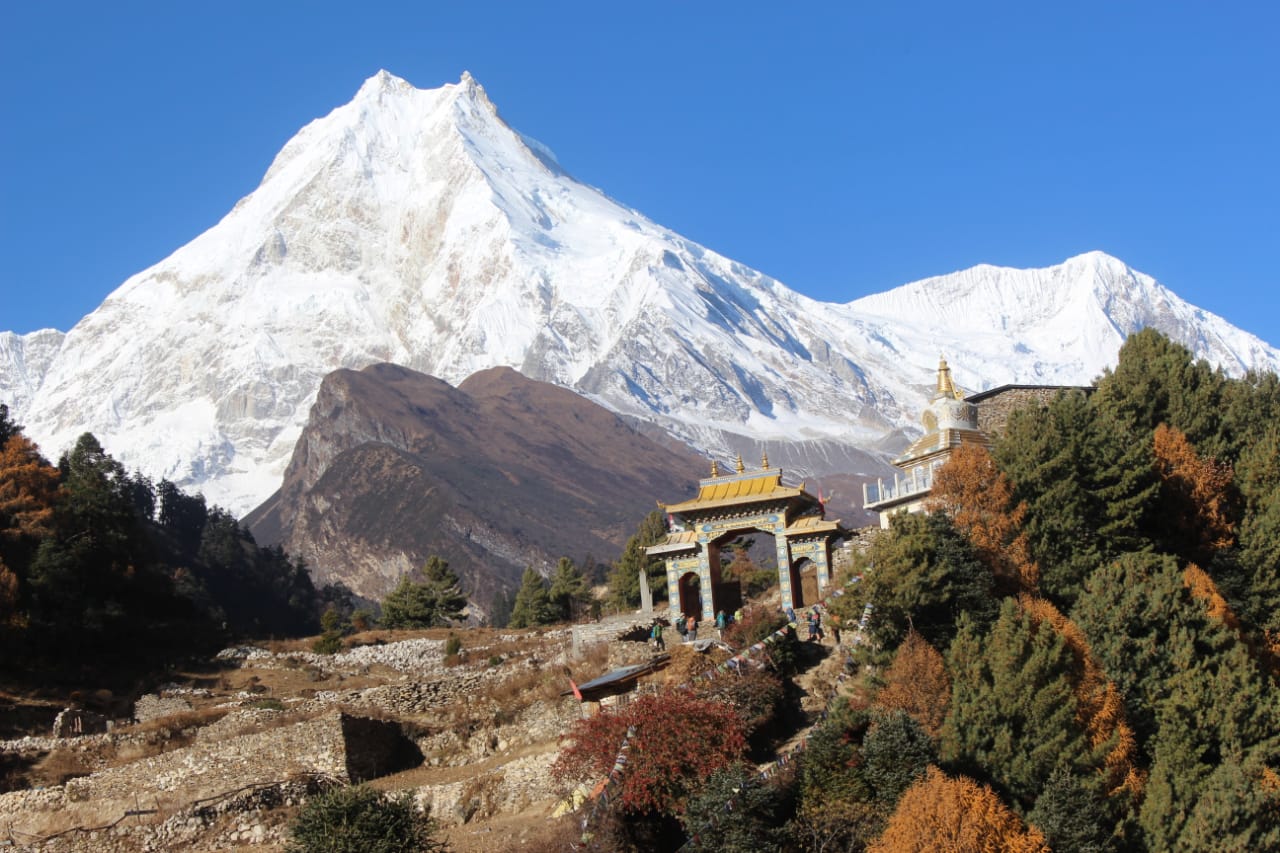Manaslu Expedition is one of the most popular 8,000m peaks for climbing in Nepal. Possible avalanches in bad weather, crevasses and slippery snow make this mountain a little distinct from other mountains in Nepal. Normally, four camps will be set up in the approach of the mountain. There will be a few stretches of steep climbing and crevasses from Camp I to Camp II. Slippery snow climbing is required from Camp II to Camp III. Avalanches are a threat from Camp III to Camp IV.
Mount Mannaslu 8163m, It was first climbed in 1953 by a Japanese team north face expedition. Its name comes from the Sanskrit word manias, meaning “intellect” or “soul”. It is the same root word as that for Mansarovar, the holy lake near Mt. Kailash in Tibet. Just as the British considered Everest their mountain, Manaslu 8163m has been always regarded as the “Japanese mountain” by the Japanese; because of the Japanese people’s first conquered on its top.Manaslu, HW Tillman and Jimmy Roberts photographed Manaslu during a trek in 1950. But the first real survey of the peak was made by a Japanese expedition in 1952. A Japanese team made the first serious attempt on the peak from the Budi Gandaki valley in 1953. When another team followed in 1954, The villagers of Sama gaon told them the first team had been responsible for an avalanche that destroyed a monastery & refused to let the 1954 expedition to climb. The expedition set off to climb Ganesh Himalayan instead.
Climbing Routes on Mount Manaslu
- Base Camp to Camp I (5,700 m/15,750 ft): The journey traverses rock slabs and moraine, leading to a crevassed glacier with occasional ice steps. This segment takes 3-6 hours and presents some technical challenges.
- Camp I to Camp II (6,400 m/21,000 ft): This section is considered the climb's technical crux. Steep parts are fixed with ropes and ladders. The terrain features 40-degree snow slopes and vertical ice steps requiring front-point cramping. Acclimatized climbers can complete this leg in around 3–4 hours.
- Camp II to Camp III (6,800 m/22,310 ft): The route continues up the glacier, growing steeper toward camp three. This camp can be wind-prone, necessitating secure tent anchors. The climb from Camp II to Camp III takes 1.5–3 hours.
- Camp III to Camp IV (7,450 m/24,445 ft): This strenuous 550-meter ascent involves weaving through seracs and ascending short, steep ice and snow sections with fixed ropes. An exposed traverse leads to a high camp, Camp IV. The journey from camp three to camp four takes 4–8 hours.
- Camp IV to Mt. Manaslu Summit (8,163 m/26,781 ft): Summit day starts pre-dawn, taking around 6-7 hours. The route ascends moderate slopes, several plateaus, and a final pyramid slope. An exposed traverse and technical ascent lead to the true summit. The climb from camp four to the summit and back takes 4–8 hours, including descent.








Aline de France écrit sur 08-04-2021
Agence très sérieuse, professionnelle toujours à l’écoute de nos attentes et de nos envies.Capable de nous proposer des treks à la demande et personnalisés.Cela fait maintenant la 13ème année que nous partons avec Churen Himal Treks.